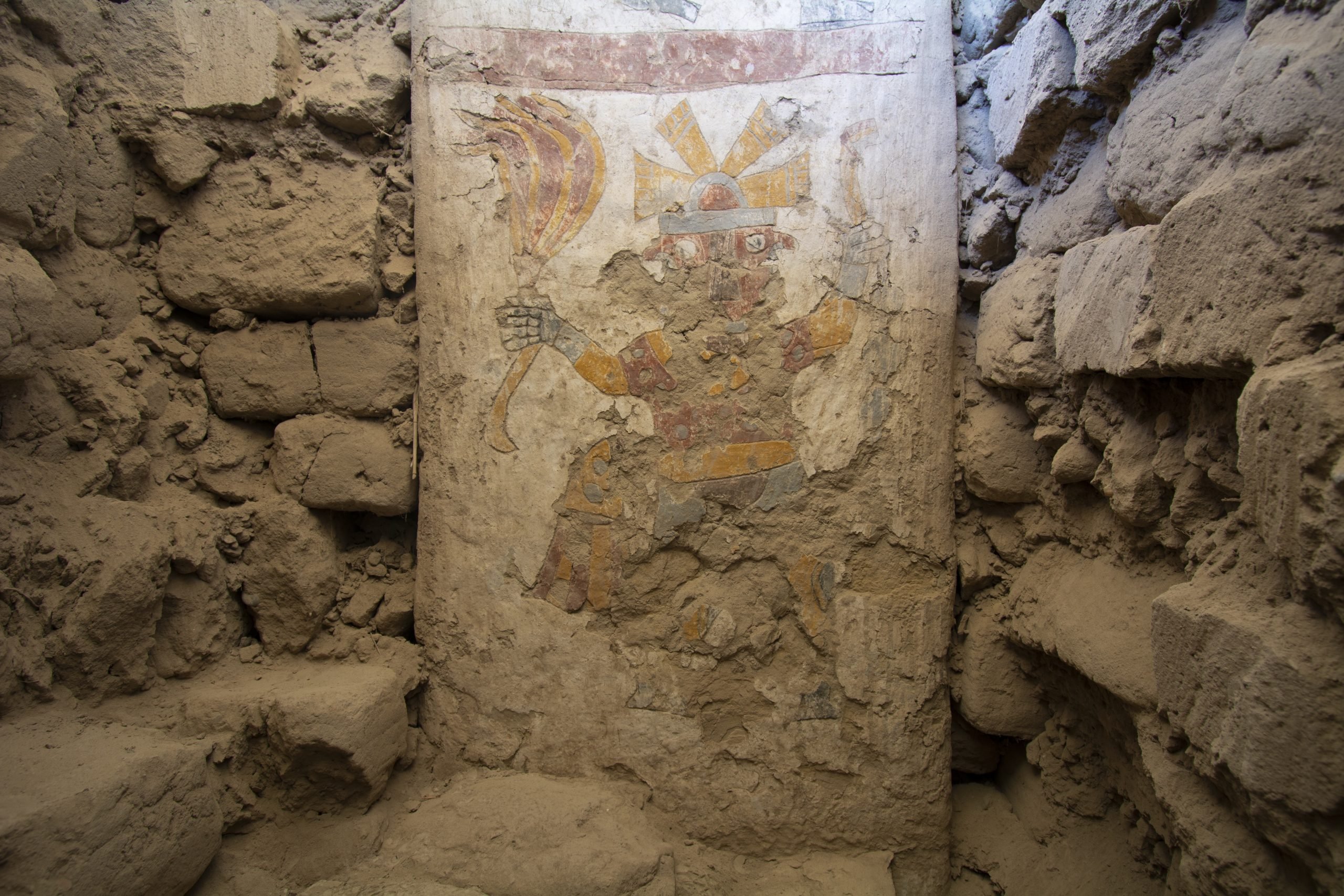
The Pañamarca archaeological site in north-central Peru may have been under excavation for 70 years, but it continues to bear discoveries that illuminate the rituals and customs of the Moche, a civilization that flourished between the 1st and 8th century.
Most recently, archaeologists uncovered a pair of 1,400-year-old murals of two-faced men on a pillar within a ceremonial hall. Aside from their vibrancy and remarkable preservation, the murals are being hailed as a singular discovery in South American archaeology for their depiction of movement and telling two stories simultaneously.
Archaeology and conservation field assistant Manuel González Olacua excavating the mural. Photo: Lisa Trever.
“These murals are beautiful windows into our past,” said Jessica Ortiz Zevallos, the Peruvian lead of the Archaeological Research Project. “We are adding significantly to work that lends insight into the perspectives and priorities of the people who walked this landscape before us.”
One such priority, as suggested in the murals, was accurately depicting religious practices and their connections to the supernatural. On the upper portion of the pillar, the two-faced man is crowned by the sun and holds a striped fan in one hand and a goblet with four swooping hummingbirds in the other. On the lower portion of the pillar, the two-faced man also holds a fan and a partially preserved stick.
While Moche art typically depict deities with supernatural elements such as fangs or wings, said Lisa Trever, a professor of Pre-Columbian art history and archaeology at Columbia University, “this one, with the exception of the two faces, seems entirely human.”
The upper figure painted on the pillar. Photo: Lisa Trever.
The discovery took place in Pañamarca’s pillared hall, which was first excavated and documented in 2010 and has an unusually high density of mural paintings. This fact, in addition to the narrowness of the passageways, has led archaeologists to believe that the hall was a space reserved for important leaders or community elders.
Pañamarca, an architectural complex resting on an outcrop in Peru’s Nepeña Valley, is believed to have been developed by the Moche between 550 and 800 C.E. To date, less than 10 percent of the site’s murals have been uncovered. The Archaeological Research Project is a team of women-led international archaeologists involving local researchers as well as those from Columbia University and the Denver Museum of Nature & Science.
A pencil and watercolor illustration of the pillar by artist-archaeologist Pedro Neciosup Gómez.
“Our project has the potential to inaugurate a new period of understanding and appreciation of Moche art,” Trever added.
The team will return to the site in the summer of 2023 and continue excavating the hall, in addition to building a digital collection of photographs and virtual reality assets, many of which will be made publicly available.
See more images from the excavation below.
The team at work in the study, documentation, and conservation of the painted architecture. Photo: Lisa Trever.
Conservator Rafael Gordillo Méndez reveals the painted surface of the pillar. Photo: Lisa Trever.
Archaeologist-artist Pedro Neciosup Gómez creating a measured drawing of the painted pillar. Photo: Lisa Trever.
Detail of the unusual double-faced figure painted on the pillar, during its excavation. Photo: Lisa Trever.